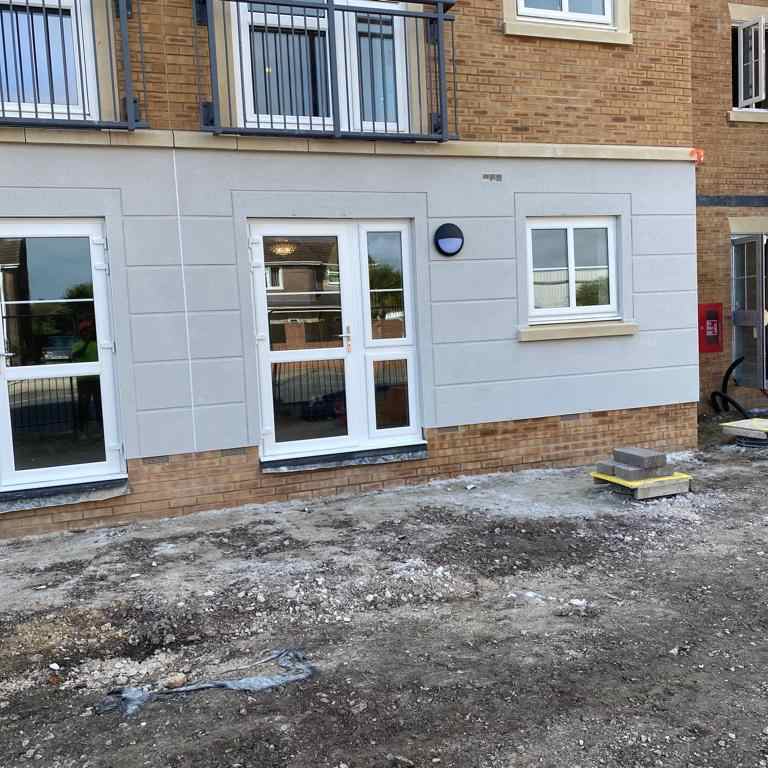Exploring Solid Wall Insulation: Materials and Costs
Posted on 23rd September 2023 at 09:36
Imagine living in a cosy, energy-efficient home that keeps you warm in the winter and cool in the summer while drastically reducing your energy bills. Doesn't that sound like a dream? Well, it's not just a fantasy. You can turn this dream into a reality with solid wall insulation.
This article will explore solid wall insulation, its various materials and methods, and provide an insight into the costs. Let’s dive in!
What Is Solid Wall Insulation?
Solid wall insulation is a great technique for reducing energy consumption and making homes more comfortable. The process involves adding an insulating layer directly to a brick or stone wall.
Types of Solid Wall Insulation Materials
Expanded polystyrene (EPS)
Pros:
Because it's easy to handle and manoeuvrable, it's faster to install and requires less manpower.
A lightweight material that can be easily carried up scaffolding or into confined spaces
Cons:
Fragile compared to other solid wall insulation options

Extruded polystyrene (XPS)
Pros:
Durable and resistant to damage during installation and handling
Has a better resistance to water absorption than EPS
More thermally efficient than other materials
Cons:
More expensive than EPS
Not as recyclable as EPS. The non-biodegradable petroleum-based materials in XPS make it hard to recycle.
Polyurethane foam
Pros:
Strong, durable, and thermally efficient
Great for reducing heating costs
Reduces heat transfer through walls thanks to its high R-value
Cons:
Can seem pricey compared to other insulation methods
Mineral wool
Pros:
Even in damp conditions, mineral wool still retains its insulating qualities. It's perfect for places with high humidity or leaky pipes.
Provides excellent thermal insulation that saves energy and reduces emissions
Blocks sound well, making it ideal for buildings near highways or in busy commercial areas where noise pollution can be an issue
Cons:
Requires protective gear to install. The tiny slivers of mineral wool can easily lodge into the skin and cause irritation.
More expensive
Exterior vs. Interior Insulation
External wall insulation improves the appearance of a building while reducing energy consumption. Creating a protective barrier on the exterior minimises heat loss and dampness, resulting in lower heating bills and a more comfortable living environment.
The price tag, however, may deter some homeowners. Adding insulation to exterior walls can also be tricky. It requires a planned approach from start to finish.
Conversely, inside wall insulation is often more cost-effective than external wall insulation. You'll also enjoy a quieter home with the best internal wall insulation.
However, the potential reduction in room size is one drawback. It's also more disruptive to install indoor insulation than exterior wall insulation.
Budget, building design, and personal preference all play a part in deciding whether to install internal or external wall insulation. Taking these considerations into account and getting expert advice can help you make an informed decision that fits your specific needs.

Solid Wall Insulation Costs
For an average semi-detached home, solid wall insulation costs around £7,000 for internal insulation and £13,000 for external walls.
However, note that you'll be investing in both the value and energy efficiency of your home with solid wall insulation. As potential buyers become more conscious of the environment, insulated homes tend to have higher market appeal. Consider these factors when deciding whether solid wall insulation is worth the expense.
Enhancing Home Comfort and Energy Efficiency with Solid Wall Insulation
You need to choose the right partner for solid wall insulation. Luckily, The Rendering Company is here to help. Our commitment to providing top-notch services makes us a reliable choice for rendering, external wall insulation, and screeding. Contact us today!
Tagged as: solid wall insulation
Share this post:
